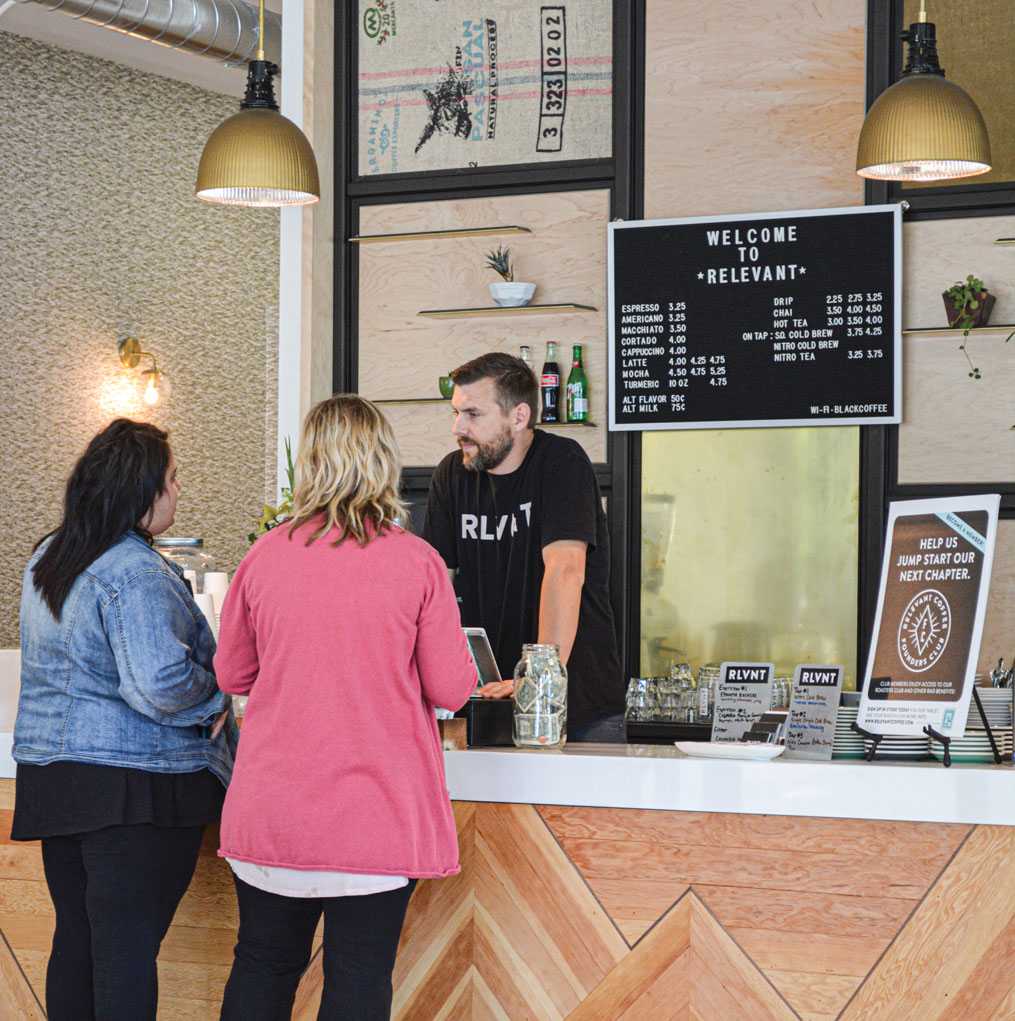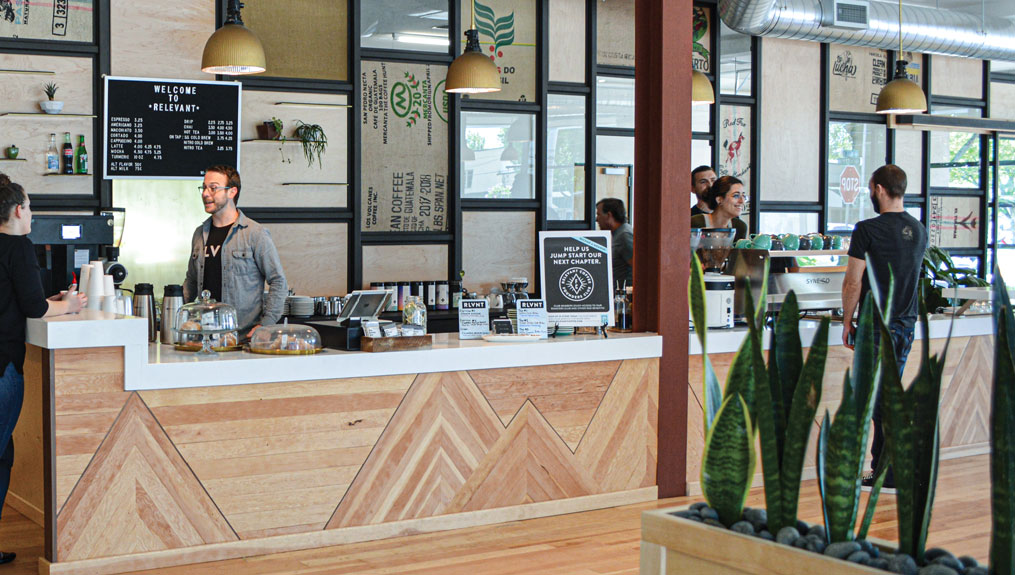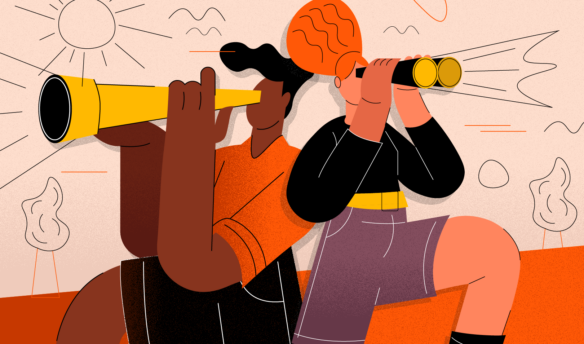This story was originally published on July 9th, 2019
Baristas often undergo hours, weeks, or even months of training before they’re allowed to serve coffee drinks, but how often do companies allocate the same level of training to the service side of the barista profession? How often does training involve helping baristas navigate situations with customers? What does good hospitality look like in your cafe—and how are new baristas taught and supported to give that kind of service?
Even when companies offer service training, many fall into tropes that reinforce the burden of flawless service on baristas without providing them with tools to make that level of service possible. When done correctly, service training can make the barista job infinitely more manageable, allowing baristas to craft positive customer experiences at a far greater frequency and scale while empowering them to address conflict at the counter if and when necessary.
Why Baristas Need Service Training
“Hospitality can and should be as much of an art and challenge as making drinks,” says Eric J. Grimm. Having worked in the hospitality industry for 15 years, they have noticed a massive disparity in how much time goes into training baristas on beverages instead of service. Not only is service training a crucial part of making shifts both satisfying and sustainable, says Grimm, “hospitality training can also give service workers the tools to create a welcoming and inclusive environment for customers.”
Sam Rogers, who has worked in hospitality for over 15 years with experience in both coffee and wine, agrees. “Hospitality is a skill that is developed over time, and like any skill, it requires ongoing training,” they say.
Ellan Kline, head of retail education and HR specialist at Ritual Coffee Roasters, says service training can make shifts run smoothly and efficiently. “At its best, service training offers baristas the tools to manage their energy in a sustainable way,” she says.

Well-done service training can create better service interactions that require less work on both sides of the counter. Not only do they make good interactions less effortful and more well-rounded, but they also can reduce the harassment by customers toward baristas and make cafés feel more inclusive to customers.
The Pitfalls: How to Do it Wrong
While these benefits are ideal outcomes, not everyone knows how to map service training in a way that empowers baristas and gives them the tools they need to create better experiences.
It’s not always obvious what the goals of customer service training should be. Many start with the false premise that service training is primarily about giving customers a better experience. While that is a side effect of excellent service, the primary goal of service training should be to empower baristas to do their jobs well in a way that doesn’t leave them feeling burned out.
Kline notes that it’s easy to come off as condescending and disempower baristas if you aren’t careful. “Don’t go over obvious things, like telling baristas to be ‘nice’ or ‘friendly,’” she says. “There’s usually no point in saying those things, and if you need to say them for some reason, explain why something so obvious needs to be said to a service professional who likely brings some experience.”
Kline also notes that there’s a tendency in service training to blame the service worker when hostile exchanges happen between baristas and customers—but assigning blame is hardly ever appropriate. “Bad service exchanges don’t happen in a vacuum; there’s usually a larger context,” she says. “Businesses who simply tell employees to be ‘compassionate’ often don’t offer that same benefit of the doubt to their employees.”
In this light, she says, cafés must complement their service training with harassment training. “It’s very important that you as a café have strong policies on what baristas do and do not have to deal with from customers, and that you stand behind your baristas when they draw that line or bring issues to light,” she says.
For example, because baristas take a lot of rude treatment without complaint as part of the job, they typically have pretty high standards for what crossing that line looks like—so, if a customer raises a complaint, you should never assume that the barista is in the wrong, Kline says.
Rogers agrees: “Putting up with harassment and abuse does not go hand in hand with providing excellent hospitality. The customer is sometimes just wrong, and that’s okay.”
Grimm also emphasizes the “customer is always right” approach to service training is misguided. “In a good hospitality training program, service workers must be empowered with information and the ability to decide when a bad customer interaction is salvageable with empathy and patience and when they are being harassed and unfairly targeted and need the support of management or HR,” they say.
Best Practices: How to Do it Right
To think about what good service training looks like, first think about the worst service interactions: typically, they involve some amount of aggression, whether active or passive, coming from one party or both. The best service training helps workers allocate their energy more stably, giving them more resilience and patience and allowing them to project energy that minimizes conflict and addresses it when it does occur.
Aside from the usual troubleshooting service tips and courtesy guidelines that most service training offers, Kline believes that ergonomics and conscious body language have enormous power to foster positive service interactions.
“People get lost in the idea of hospitality training as the knowledge service workers provide and how they speak to people,” she says. “They often don’t acknowledge that most of our interactions happen on a subconscious physical level with our body language. Good customer service training should involve ways to better inhabit your body so that you can respond to situations intuitively and naturally.”
Kline believes that service training should be broken up into different modules, one covering all of the basics like menu logistics, general service style, harassment policy, and troubleshooting, and one about how to posture your body in a way that allows you to feel comfortable, confident, and resilient at work.
“One of the things that I like most about ergonomics and posture is that you aren’t focusing on the interaction with the customer; you’re focusing on your interaction with yourself and your environment,” she says. “You’re checking in with yourself and making sure you’re relaxed. When we work with our bodies, it’s very easy to internalize physical tension into emotional tension, creating bad interactions, and vice versa.”
Rogers strongly believes in the principle of nonverbal hospitality as well.
“Nonverbal hospitality means making sure you have all of the tools in place to communicate a sense of welcoming from the moment a customer arrives,” they say. They add this comes in part from how management structures the space (Is it ADA accessible? Is the bathroom available for all customers?) but also from workers and how they use body language like eye contact to create a sense of welcoming and acknowledgment of all customers, even during busy shifts.
Rogers also notes that nonverbal hospitality doesn’t mean smiling; “it means being aware of how you move through a space and how your movements affect those around you.”
Grimm says that a practical hospitality program should “put service workers in a position where they are supported by their team and can give support to customers quickly and efficiently, but with an eye toward showing care, attention, and respect to customers who are likely to face micro- and macro-aggressions in many of their everyday interactions.”
They also say empowerment is critical: not only should service training help workers avoid burnout, but it should also set them up for growth, whether in the company or outside.
Equipped with the proper tools, baristas can give consistently excellent service and have a consistently fulfilling experience serving others. Lousy service doesn’t happen in a vacuum; it comes from systemic disempowerment and discomfort on both sides of the counter that can and should be resolved with thoughtful systems, communication, and training. With positive experiences on both sides of the bar, workers and customers alike will return daily, making hospitality training a worthy investment of any café’s time, energy, and money.
This story was originally published on July 9th, 2019, and has been updated to meet Fresh Cup’s current editorial standards.















